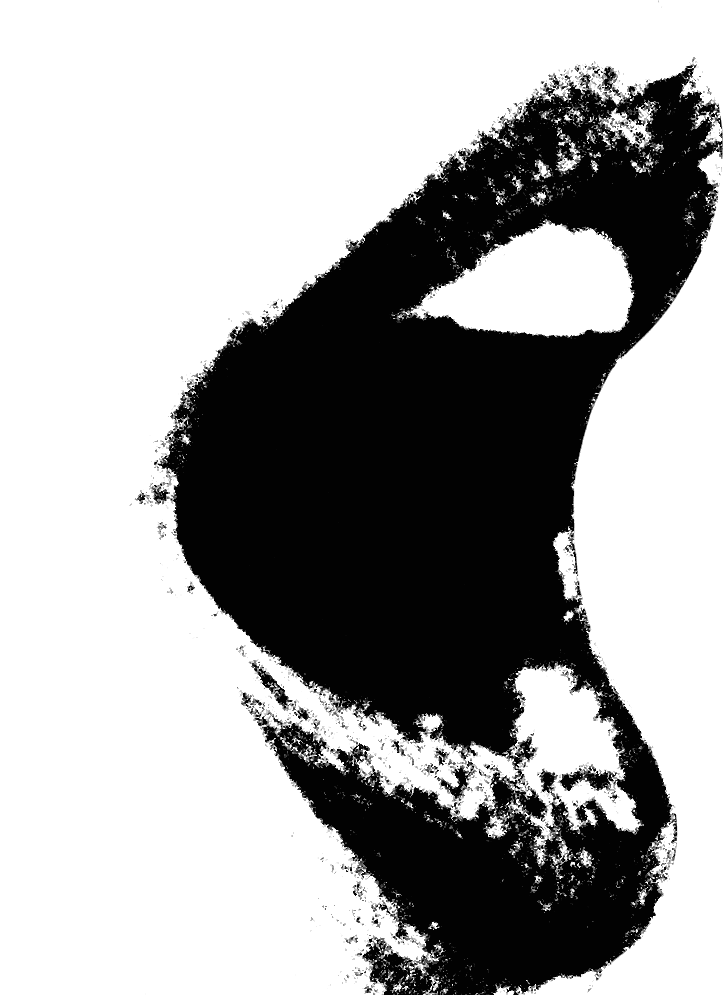Transcript of "Charlie No Face"
[opening slow, eerie music]
Raymond Robinson [an older man's voice]: In Pittsburgh, they call me the Green Man. At night, drive down Piny Fork Road in South Park and stop at the abandoned salt tunnel. It's the one with the concrete slabs strewn with graffiti and the arch that looms above piles of salt that leads into shadow. Now turn your headlights off. Tap the car horn and wait for me to appear. [two honk noises] Some say I emerge from the tunnel, my skin growing green from the electrical accident I suffered as a boy. Others say that I press my head against their car window, [horrified screaming] a faceless specter with a jagged hole instead of a nose and skin where eyes should be. That's how most folks remember me, but I'm telling you I was a real man.
[old movie-style music]
In 1910, I was born Raymond Robinson in Beaver Falls, Pennsylvania . My father worked in the sand quarries and my mother stayed home. I don't remember my father much. He died when I was seven. So my mother married Uncle Orin. My six siblings and I liked to play in the woods near our house and with all the neighborhood kids. [music stops]
When I was eight years old, the accident happened. [eerie static plays mixed with the rumble of children's voices and playing] It was a June day when the neighborhood boys and I were on our way to the swimming hole. While we walked through the woods [footsteps], we passed over the Morado Bridge, in a long narrow path over Wallace Creek in Pittsburgh. Trollies would pass and shake the wooden slats, but there were no trollies that day. There were no sidewalks or side rails either. Just tall poles that held electric wires at the top. It was a three-story drop from the bridge into the water below. The boys were getting rowdy on the bridge, and we started playing truth or dare. My friend, Willie Petrovich, said:
Willie [child's voice]: I dare you to get the eggs out of that bird's nest up there. Right near the pile of leaves and twigs on the top of that pole. It's just above the radioactive wires.
Raymond: The other boys cheered me on as I shimmed up the pole. It wasn't too hard because my body was so light. [ominous music joins in with buzzing and sounds of children playing] The last thing I saw was my hand reaching for the nest. The cloud spinning in the sky. The thick electric wire coming closer. [silence] And the horizon swirling into a rush of color.
[hospital beeps] I woke up in a hospital bed. My whole torso was scorched. I lost my left forearm. My nose was a jagged hole, and my mouth was sunken in. My chin was a bulbous mound, but I couldn't see any of it because my eyes were gone. Later, the doctors would sew skin over my face. When it healed, I would pass my right hand over my eyes and marvel that I would never be able to cry again. I don't want to sound all self-pitying, though. I got used to things pretty quickly.
[old-time radio music] I lived with my family through my adulthood. During the day, I liked to listen to the radio, make leather crafts, play brain teaser puzzles, and hike through the woods. At night, I went for walks along Route 351. [door opens, footsteps] My family hated my walks because some people would beat me up, and I even got hit by a car a few times. [car roars by] If I heard a car coming, I turned my face away so that I wouldn't scare them. But if I heard the same car coming twice [another car sound, closer] I'd turn my face toward them because I realized that they wanted to see me.
Still, I made some great friends around here. [beer can opens; upbeat music starts]. We hung out a lot drinking Budweiser, smoking cigarettes, and eating cheeseburgers. A lot of people said they were surprised at how nice and polite I was. A lot of people were scared of me. And others came from as far as away as Chicago just to look at me, calling me Charlie No Face. [music fades out]
I got used to my injuries. But I'm still surprised that people turned me into an urban legend. What is it about facial injuries that makes people so scared and curious? Maybe it's because they've just never seen a faceless person before. [light music starts] When you think of your friend, the first thing you think of is his face. His eyes , nose, and mouth. But if someone doesn't have a normal face, then it messes with how you view people in general. If not everyone has a face, then how can you think of people? If not everyone looks like you, can you trust them? [light singing begins]

















